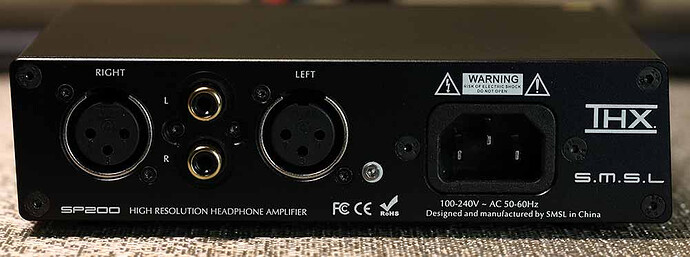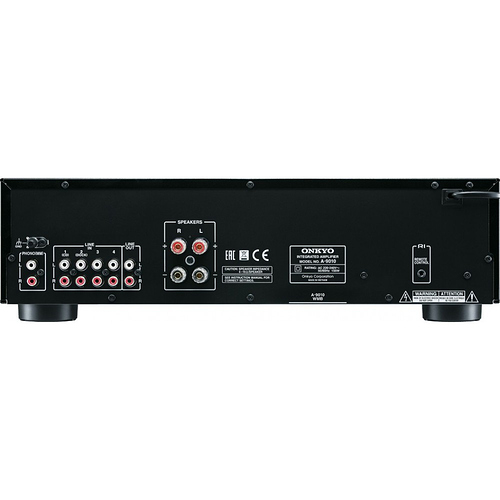Seeing as you find them identical, are you still keeping the 888?
Yes. I took my Atom to work.
If I had the Aeolus coming I’d be looking at tubes probably.
dB is base 10 logarythmic, so 90 (power ratio 1^10 * 9) to 127 (power ratio 1^10 * 12.7) while a difference of 10^3, it is very low noise, to very very low noise.
I could tell you the difference with an oscilloscope when I put a 1000x amplification on the balanced side, and that is about it.
Is there such a thing as a 2-male RCA to 4-male RCA splitter? I want to connect my SU-8 to this amp and to my speaker amp.
Also, what’s the cheapest option for an XLR adapter to plug in unbalanced headphones into the balanced output?
Yeah, you can get a splitter like this
https://www.amazon.com/dp/B019ZQS4N4/ref=cm_sw_r_cp_apa_i_NBQZDb7ZW5TRE
Also don’t plug unbalanced into a balanced output. You are just asking for trouble (sometimes). Balanced to unbalanced is fine but you could cause issues if you try and connect unbalanced headphones to a balanced output with an adapter
Not sure the splitter would work, the SU-8 only has 1 dual RCA out. I’d need 2-male RCA to 4-male RCA if I want to connect to two amps
If I’m understanding you correctly, you would get those splitters and each splitter would plug into the left and right, and the two splitters would provide 2 left and 2 right, making for 2 amps to be able to connect. One of the splitters takes a single rca and splits it into 2. Therefore with both splitters on left and right you would end up with 4 rca outs total
It’s quite possible I’m just not understanding you properly, but as you can see from the photo, it’s only one (L+R) output on the SU-8. If I plug two splitters into it, it’s only half the signal, right?
I want to connect this:
into this RCA:
and this line in:
Is there a reason you don’t want to do XLR balanced from the SU-8 to the SP-200? You could do balanced XLR from SU-8 to SP200 and unbalanced RCA from SU-8 to your speaker amp.
That is the plan, but my XLR cable won’t be here for another 2 weeks at least + I don’t have any balanced headphones, and apparently an XLR to 3.5 adapter is not a good thing
Okay, just fyi, you don’t need balanced headphones. You can use the balanced input on the SP200 and still use the unbalanced 1/4" output on the front.
And yeah, you don’t want to try plugging in unbalanced headphones to balanced source, but you don’t need to use it in this case. Just use the 1/4 output. Same power output. Any differences are inaudible from my testing.
Great, then! Saves me the unnecessary purchase ![]()
Lol I had assumed you had already been using the xlr outs, well yeah then you don’t need the splitter
Wish I could demo these THX amp’s somewhere… Pretty happy with the EL AMP and my current gear is mid-fi (my definition of it at least) so not sure if I should wait till I have my next round of upgrades.
I mean honestly the el amp is great and it’s not something I would personally trade for a sp200 (perhaps a 887 tho for the better power)
I don’t even push the el amp power wise yet and don’t use balanced. All this really is is the curiosity over THX.
Yea, if you don’t have any balanced gear and don’t feel that you want more power, I don’t think the sp200 is going to yield that significant of a difference. Perhaps put some money towards the lcd 1 and reevaluate your hatred towards Audeze lol
IMO, main benefit to one of the THX amps is just having TONS and TONS of power, likely more than you’ll ever need… There are definitely cheaper options that are audibly just as good sound wise, just with less head room in terms of power.
![]()
![]()
![]()
![]()
![]()
![]()
![]()
![]()
![]()
![]()
![]()
I realize @olinko’s issue is resolved, but in case another reader comes along and is confused by the term “splitter” I’ll leave a comment.
In audio, the term “splitter” can be a bit misleading. The word ‘split’ can reasonably understood to mean something like ‘divide and separate’, implying that a portion of the signal goes down one path and a different portion goes down the other path. But, since we’re dealing with electrical circuits, what these “splitters” do is create a parallel electrical circuit. The key usefulness of parallel electrical paths here is that both paths get an equal voltage drop across them, meaning that both paths of the “splitter” get identical signal from the DAC (or whatever signal is being split). So as @M0N said earlier, in this context a “splitter” would take 1 ‘L’ signal and turn it into 2 identical ‘L’ signals. A word of caution to any reader new to audio: it’s ok to use “splitters” to duplicate a line-level signal - there should be no issues here (except maybe ground loops if you do it too much) - but DO NOT try this with speaker wires between amplifier and speakers. Parallel signal paths actually reduce the total impedance of a circuit and that can cause your amplifer to freak out, and possibly do permanent damage.
I hope this helps future readers…
PS: advanced users should be fine wiring two 8 ohm speakers in parallel for an amp that is rated to handle 4 ohm loads. Putting 2 4-ohm speakers in parallel for a 2 ohm load will likely cause problems for the vast majority of amplifiers.


